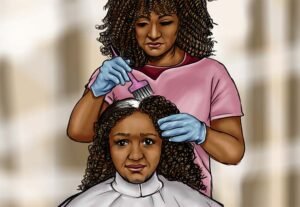Back in March, at the initial hearing, opening a new tab in combined litigation over purportedly unrevealed adverse effects from Ozempic and various other diet plan medicines, complainants' legal representatives told a Philadelphia government court that they would certainly currently agree on a slate of 4 legal representatives to lead the mass tort instance.

U.S. Area Judge Genetics Pratter of Philly appointed opens up new tab those very same four lawyers– Paul Pennock of Morgan & Morgan; Parvin Aminolroaya of Seeger Weiss; Sarah Ruane of Wagstaff and Cartmell; and Jonathan Orent of Motley Rice– as lead advise in the multidistrict lawsuits against diet plan drugmakers Novo Nordisk, opens up new tab and Eli Lilly.
Yet Pratter was no simple stamp.
In the two months between the preliminary hearing in March and her management order on Wednesday, the judge took excellent care to guarantee that lawyers who were not part of the self-selected slate had a chance not just to apply for a leadership message but also to talk about the choice process.
The court additionally evaluated whether there was true consensus support for the self-selected slate by assigning a team and opening up a brand-new tab of eight lawyers last month to act as the core of a guiding committee. Just one of the suggested co-leads was part of that team, which served as a selection board to improve the original management proposal while confirming that the four initially proposed co-leads had wide backing from various other legal representatives in the event.
Pratter’s process included some dramatization, with one complainant company particularly objecting to the entire concept of self-selection by supposed “repeat gamers” in MDL instances.
Inevitably, however, Pratter’s approach – entertaining leadership applications from all arrivals, advertising effectiveness by limiting the dimension of the leadership group, and, most notably, examining the degree of support for a supposedly consensus slate of co-lead advice – makes a lot of sense.
There are a couple of official regulations to assist courts in the selection of lead advice in these significant multidistrict situations, even though leadership consultations have large repercussions affecting countless plaintiffs. Lead advice determines exactly how MDLs will certainly be prosecuted and solved. Leadership consultations can additionally be enormously lucrative because legal representatives obtain a small portion of every settlement to award them for a job that profits all complainants in the lawsuits.
Prater’s method in the Ozempic instance recognizes those high risks. She paid proper deference to the complainant’s attorneys, who functioned amongst themselves to pick their leaders before she was also assigned to manage the Ozempic litigation. Yet she also widened the process to see that the self-selected slate would certainly do the very best job of running the situation. That’s a great version for various other MDL judges to comply with.
I’ll stop briefly to keep in mind that Ozempic and Wegovy maker Novo Nordisk claimed in an email declaration that claims in the MDL are “without advantage” and that it will certainly safeguard the cases vigorously. DLA Piper stands for Novo. Neither Eli Lilly, which makes Mounjaro, nor its advice at Kirkland & Ellis, responded to my question. Both Lilly and Novo claim that their drugs are secure, and the negative effects are completely disclosed in the labeling materials.
I already told you last month concerning the early management skirmishing in the Ozempic situation, so I intend to focus currently on Pratter’s visit in late March of 8 complainants legal representatives – consisting of one, Marcus Susen of Susen Law Group, who did not initially sustain the agreement management slate– to a guiding board.
As we reported at the time, the judge’s order was unusually ambiguous. Pratter did not name lead guidance. She left it up to the eight selected legal representatives to suggest extra board participants and an in-depth leadership structure reflecting the court’s efficiency problems.
Two legal representatives selected to the steering board, Pennock of Morgan & Morgan and Alex Walsh of Walsh Legislation, told me that their team ruled out its members to have been designated lead advise. Rather, they said, the team regarded itself as a selection board tasked with determining which plaintiffs attorneys best suited for particular leadership jobs.
It was important, stated committee participants Walsh and Susan, that the eight-lawyer group reflected a varied range of points of view from individuals who were not part of the originally proposed slate of co-lead advice. Pennock was the only choice committee participant in the initially proposed co-lead slate.
He claimed Pratter’s appointment of a cross-section of legal representatives to veterinarian the self-selected co-leads was “smart.”. ”
The court wished to make certain,” stated Pennock, “that the previously proposed slate was what everyone wanted.”. The team met numerous times to hammer out a proposal that limited the leadership lineup to 25 legal representatives, as Pratter got, with specified roles for each legal representative. That proposal was submitted to Pratter on Might 3. (The proposition is not docketed, and co-lead advice did not respond to my request to see it, so it’s unclear if Pratter embraced it completely.).
” What the court did was wonderful,” stated Walsh. She stated plaintiffs’ lawyers usually must choose how to lead their cases – equally as offenders pick their very own counsel – yet agreed that self-selection can raise problems regarding justness and exclusivity. She stated that Pratter’s development of a choice committee minimized those worries.
” It’s exactly how it should be done,” Susan said.
Management candidate Sarah Foster of the Schlesinger Law Workplaces, who challenged the originally proposed slate, did not reply to my email inquiry. She did not get an official leadership blog post. However, Pratter was assigned liaison advice from Great Kaplan and Black to function as her advisor. Pennock told me he and the other co-leads are pleased to have been advised by various other plaintiffs’ lawyers and accepted by the judge regarding the checks and equilibriums
Pratter devised. ” Now we can return to action in the event,” he said.
Are you suffering from Gastroparasis or any life threatening condition after using Ozempic. Apply for Free Case evaluation with Claim help desks. Hurry, You may be eligible for compensation.





